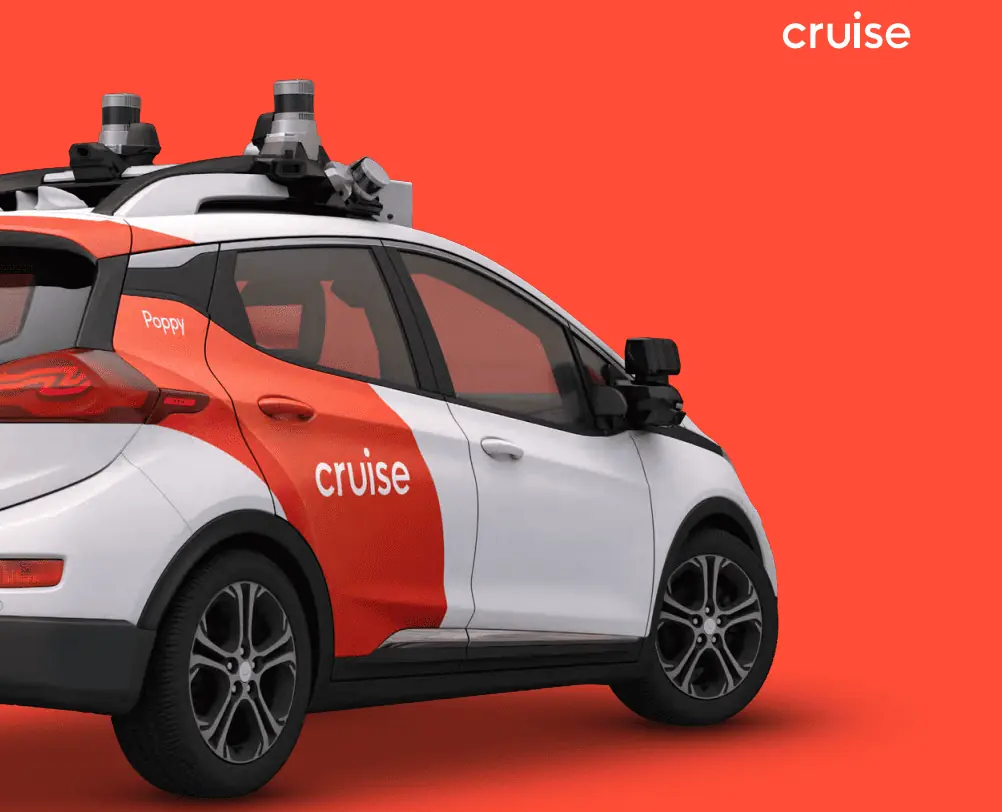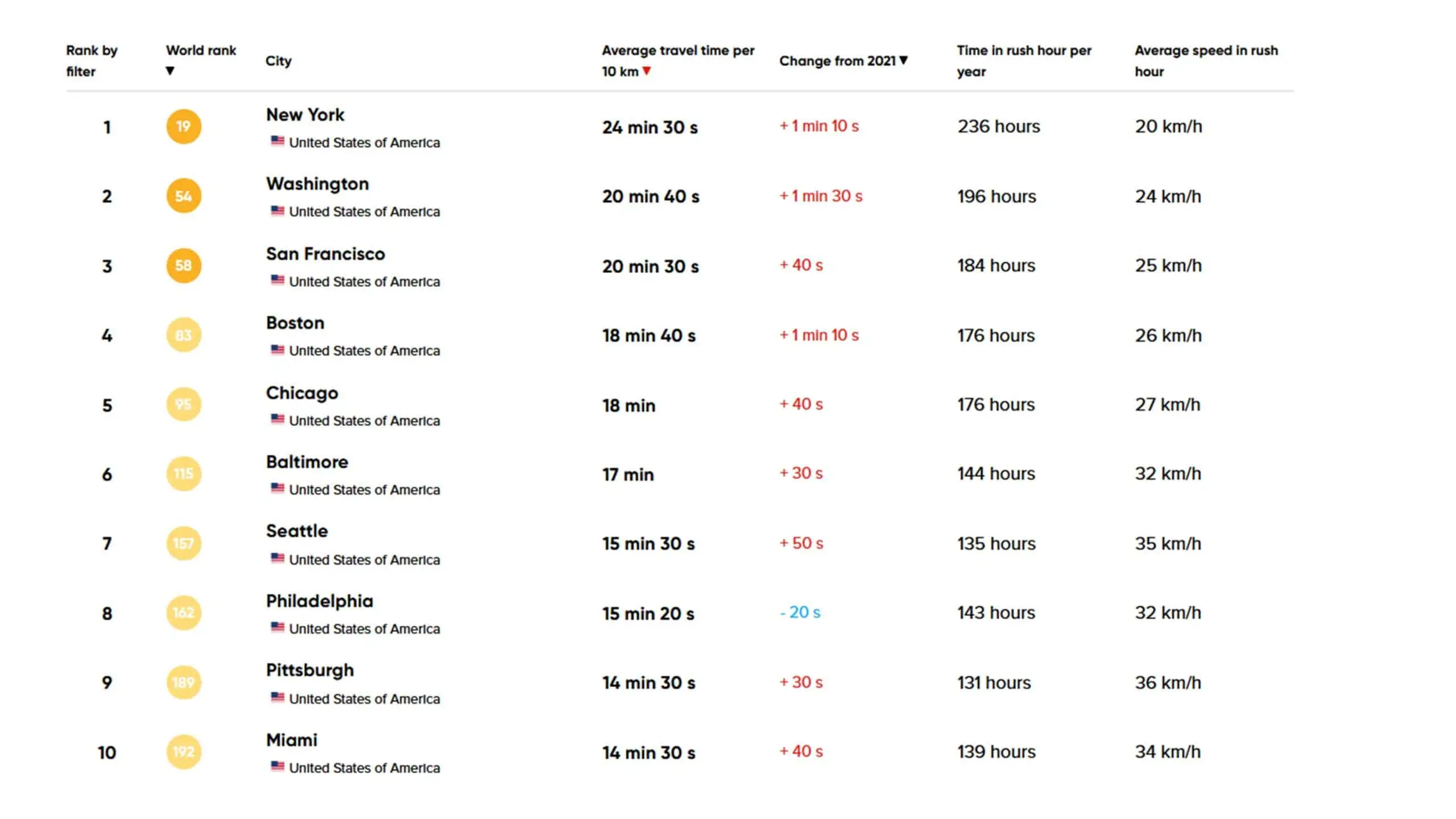
2022 Cruise Annual Impact Report Cover (Photo: Cruise)
By Colin Barnden
What’s at stake:
Cruise wants to frame human drivers as responsible for the death toll on U.S. roads. But look more closely, and its advertising campaign throws Secretary of Transportation Pete Buttigieg under the bus.
An advertisement released last week by GM Cruise declared “Humans are terrible drivers.” It continued: “42,795 Americans were killed in car crashes last year. People cause millions of accidents every year in the U.S. Cruise driverless cars are designed to save lives. Our cars were involved in 92% fewer collisions as the primary contributor. They also never drive distracted, drowsy or drunk.”
Let’s look further into those claims.
According to the official release from National Highway Traffic Safety Administration (NHTSA), “42,795 people died in motor vehicle traffic crashes.” Right off the bat, Cruise politicized the data. There is a distinct but subtle difference between “42,795 Americans dying,” and “42,795 people dying on American roads.” NHTSA also specifically states: “motor vehicle traffic crashes,” but Cruise changed this to “car crashes.”
Let us be clear, too many people are dying on American roads and initiatives are clearly necessary to bring the total down. But if humans really are terrible drivers, then that is a failure of NHTSA, and ultimately of U.S. Secretary of Transportation Pete Buttigieg. Assigning blame to drivers won’t change anything when the problem is a lack of leadership.
If the absolute number of lives lost matters, then a comparison of motor vehicle traffic deaths with deaths from cancer reveals a startling statistic. According to the American Cancer Society, there were around 610,000 deaths from cancer in the U.S. in 2022. That is more than fourteen times the number of deaths from vehicle crashes.
So, why the free pass for AV companies to do and say pretty much anything they like, while cancer research companies are heavily regulated? Is Cruise really interested in promoting road safety, or in promoting itself?
Millions of accidents
CEO Kyle Vogt boasted in early July that Cruise had passed three million driverless miles, having passed two million only in late May. To put those numbers into context, according to statistics from the Federal Highway Administration annual vehicle miles traveled on U.S. roads totaled about 3.1 trillion in 2021. Yes, that’s trillion, or a million million.
Cruise’s San Francisco driverless permit limits operation to a maximum speed of 30mph. The TomTom Traffic Index is presented below for cities in the U.S. It shows that San Francisco has the third slowest average traffic speed in the country, behind only New York City and Washington D.C., at about 18mph on average, and about 15mph in rush hour.

So, Cruise’s rapidly growing tally of driverless miles doesn’t prove that it is safer than a human driver. It proves that driving is safer at slower speeds, which applies equally to human-driven and machine-driven vehicles.
Cruise also claims: “Our cars were involved in 92% fewer collisions as the primary contributor,” and goes on to define this as: “When benchmarked against human drivers in a comparable driving environment.”
Precisely what is meant by the qualifying statement is unclear, although what is clear is that Cruise has conveniently discounted the role of advanced technology installed in its vehicles, specifically lidar sensors for automatic emergency braking (AEB).
Lidar provides significantly higher fidelity and much greater range than the camera and radar sensors currently found on most human-driven passenger vehicles operating on U.S. roads. The use of lidar leads to higher performance and faster reaction times in safety-critical scenarios, meaning the severity of a collision can be reduced. As Cruise acknowledges, it can even be avoided altogether.
The limitations of existing AEB solutions are well documented, both by AAA and IIHS. Human-driven passenger vehicles featuring lidar-based braking systems are extremely uncommon, owing to the traditionally very high price of the sensor. Luminar Technologies is one supplier working to reduce the cost of lidar, to make the technology suitable for use in AEB in mass-market vehicles.
Luminar has demonstrated the effectiveness of its technology in the video below, which is required viewing for every safety advocate, policymaker, and law maker in any way involved in the road safety debate.
Missy Cummings, Professor at George Mason University, has frequently observed that humans have a neuromuscular lag of about a half-second. That means the time from a human driver deciding to slam on the brakes to the instant their foot actually begins to move towards the pedal, is about a half-second. Human reactions get slower as we age, and the lag is closer to one second at age 70.
At 20mph, a half-second lag equates to vehicle distance traveled of about 15ft, and about 30ft for one second. Cruise’s claim of “92% fewer collisions” can therefore mainly be attributed to the use of lidar. If the goal really is to save lives and avoid millions of accidents, U.S. policy makers need to focus on the minimum performance of AEB in mass-market vehicles.
After years of inaction, NHTSA is finally moving to improve the performance of AEB.
Distracted, drowsy, or drunk
Cruise claims its robotaxis “never drive distracted, drowsy or drunk.” While that statement is technically true, broadcast media regularly reports stories of Cruise vehicles not driving at all, and simply sitting disabled in the center of roads and intersections, awaiting rescue.
Mitigating human distraction and drowsiness is the role of a direct driver monitoring system (DMS). The most advanced DMS integrated into a production vehicle in use on U.S. roads today is assessed to be in Ford’s Blue Cruise and was developed by Veoneer (now part of Magna) using driver monitoring technology from Seeing Machines.
Blue Cruise is very highly rated by Consumer Reports in part because of the effectiveness of the DMS to monitor driver engagement while the hands-off driving feature is engaged.
DMS will be mandatory in all new vehicles with four or more wheels sold in the EU from July 2026. NHTSA has yet to announce any coherent plans to make DMS mandatory in the U.S., leaving humans exposed to accusations of being terrible drivers when the technology to mitigate distraction and drowsiness and help them drive more safely already exists.
Bottom line:
High performance AEB and DMS are the most important technologies to save lives on U.S. roads. But the lowest hanging fruit is enforced lower speed limits, and that will require political courage.
Colin Barnden is principal analyst at Semicast Research. He can be reached at colin.barnden@semicast.net.
Copyright permission/reprint service of a full Ojo-Yoshida Report story is available for promotional use on your website, marketing materials and social media promotions. Please send us an email at talktous@ojoyoshidareport.com for details.
